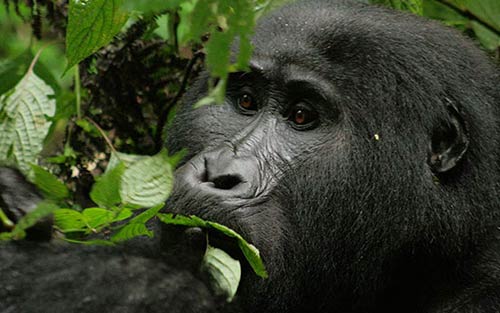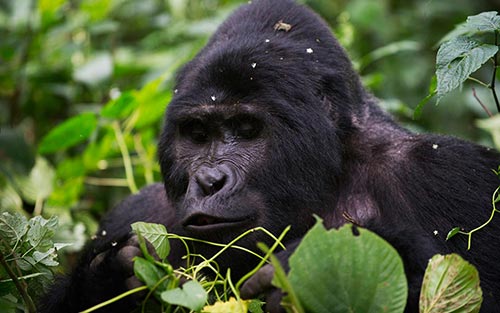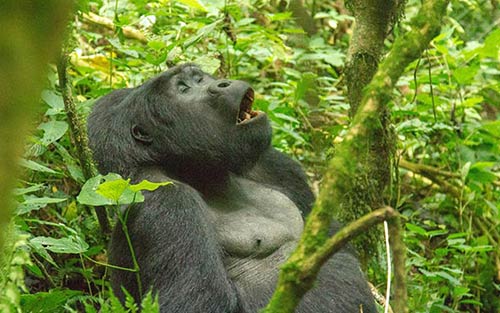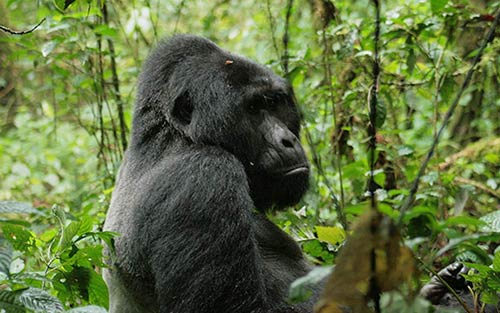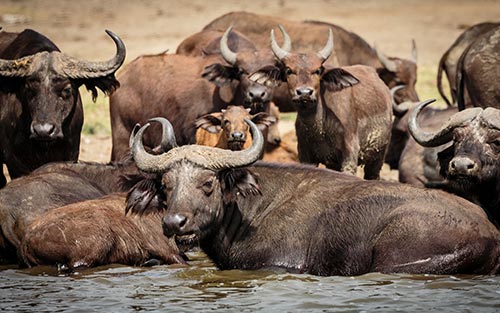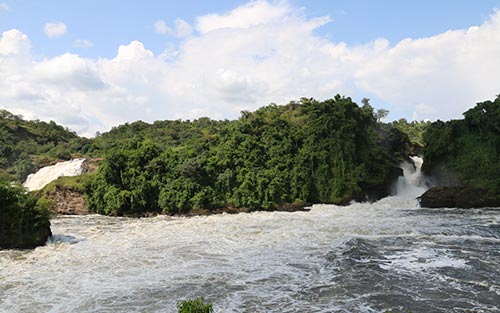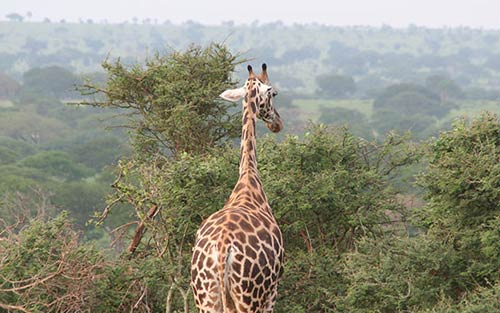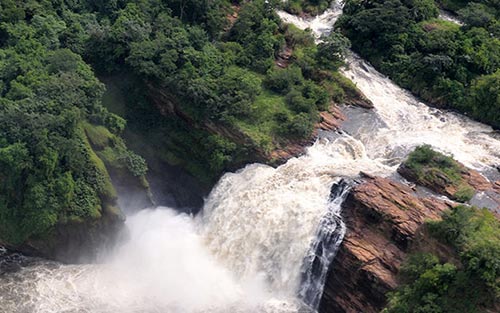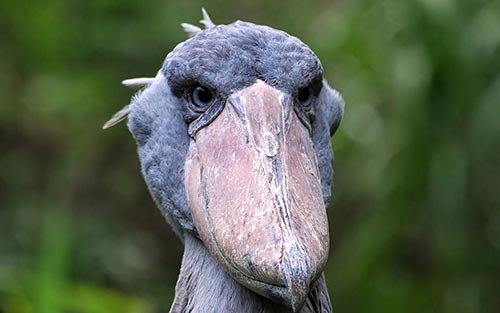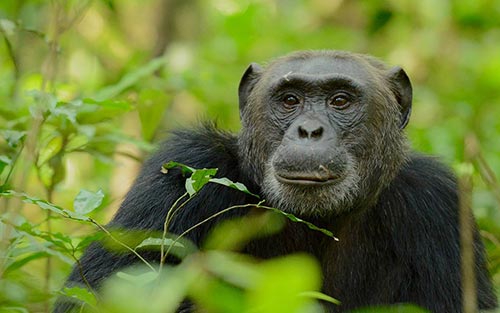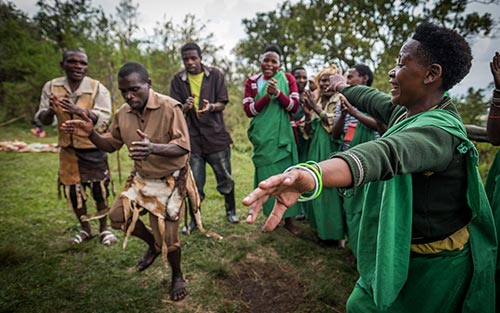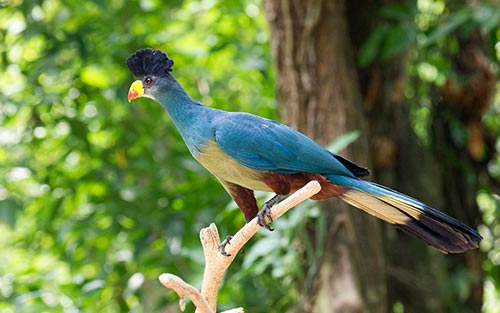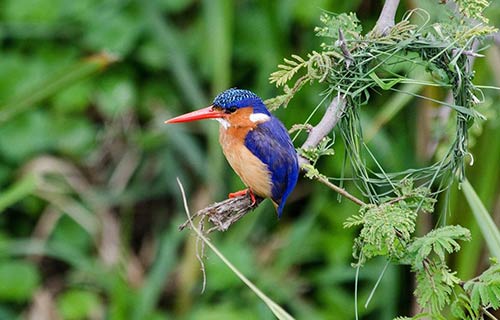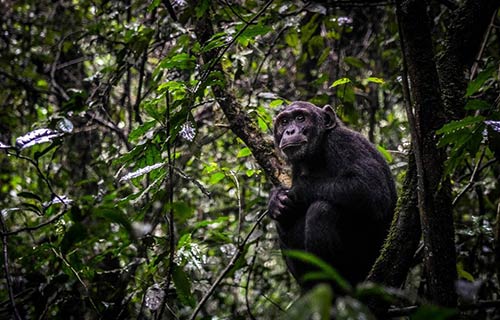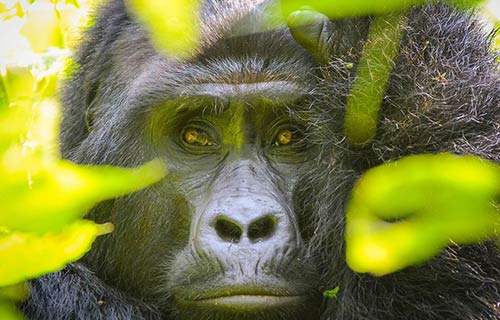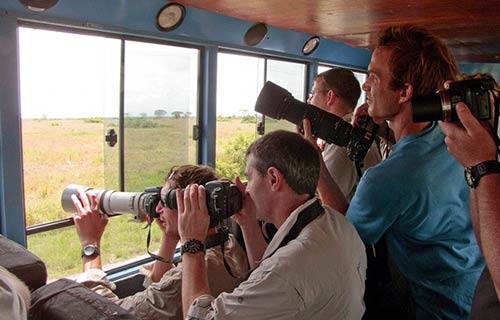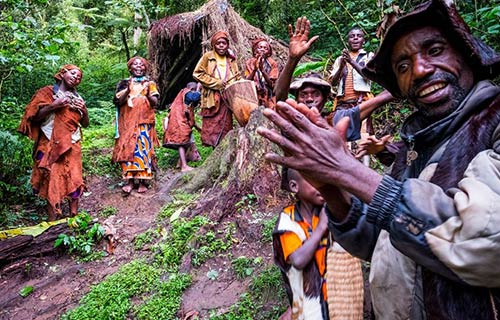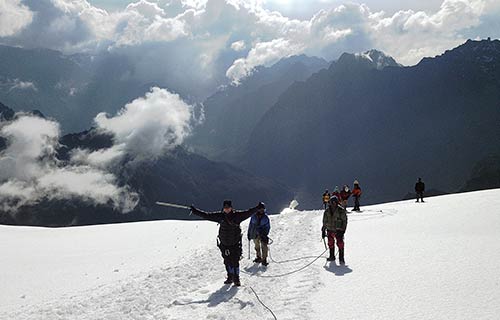Kibale Forest National Park
Best place for chimpanzee trekking in Uganda
This 296-square-mile (766-km²) park consists of marshes, grasslands, crater lakes, lowland tropical rain forest, tropical deciduous forest and montane forest and is the best place in Uganda for chimpanzee trekking. Kibale Forest National Park received National park status in 1991.
In addition to being one of Uganda’s newest parks, it is also the country’s most accessible forest and is thought to have one of the dense primate populations in the world. This claim to fame has made it the site of several long- term primate behavioral and scientific studies. The resulting exposure to researchers has habituated many of the chimpanzee troops to human observers, thereby providing today’s tourists with some of the finest monkey viewing in Africa. Kibale Forest National Park has a significant Chimpanzee population, and ten other primate species are present including Red Colobus, Black and White colobus, blue, red tail, and L’Hoest’s Monkeys, Grey-checked Mangabey, and Galagos.
Several other large mammals inhabit Kibale Forest National Park including Elephant, African Buffalo, Bushbuck, several duiker species, Bush pig, and Giant forest hog. Over 300 bird and 144 butterfly species have been identified here.
Monkeys Found in Kibale Forest National Park
Monkeys of the Kibale forest are members of the taxonomic family Cercopithecidae, or Old World Monkeys. They fall into four genera: colobus (closely related to the leaf eating monkeys of Asia), cercopithecus or guenons, papio or baboons, and cercocebus or mangabeys. Brief descriptions of several of the more commonly seen species follow:
Olive baboon (Papio cynocephalus) – Baboons are heavily -built, ground-dwelling primates, much larger than any other Ugandan Monkey. They have a distinctive dog-like head and live in large troops with a complex and rigid social structure held together by matriarchal lineages. Males frequently move between troops in their search for social dominance. Baboons are omnivorous, highly adaptable, and are the most wide spread primate in Africa.
Blue Monkey (Cercopithecus mitis) – the most widespread forest-dwelling guenon in East Africa, this monkey is a uniform dark blue-grey color, except for a white throat and chest patch, with thick fur and backward projecting hair on it’s forehead. It lives in troops of 4-12 individuals and frequently associates with other primates.
Redtail Monkey (Cercopithecus Ihoesti) -Another widespread forest monkey, the Redtail is brownish in appearance with white cheek whiskers, a red tail, and a distinctive white heart-shaped patch on it’s nose. The red tail is normally seen singly, in pairs, or in small family groups. It also frequently associates with other monkeys and has been known to accumulate in very large groups.
L’Hoest Monkey (Cercopithecus Ihoesti) -Less well known and difficult to see than most guenons, largely due to it’s preference for dense secondary forest and it’s terrestrial habits, this monkey has a black face and backward projecting white whiskers that partially cover it’s ears. It habitually carries its tail in an upright position.
Grey-Cheeked Mangabey (Cerocebus algigena) -This grayish-black monkey has few distinguishing features. It has baboon like mannerisms, a shaggier appearance than a guenon, light grey cheeks, and a slight mane. Grey cheeked Mangabeys live in lowland and mid-altitude forests.
Black – White- Colobus (Colobus Guereza) – The black- and- white colobus, widespread in East, West and Central Africa, is a beautifully marked and distinctive monkey with a black body, white facial markings, and a long white tail. It typically lives in small groups and is almost exclusively arboreal. An adult is capable of jumping 100 feet through the forest canopy, a spectacular sight with its tail streaming behind.
Red Colobus (Colobus Badius) – This relatively large reddish monkey has few distinguishing features. It is highly sociable and normally lives in scattered troops of 50 or more. At least two subspecies are found in Uganda.
Galagos (Galago Sp) – Distantly related to the Lemurs of Madagascar, Galagos are small nocturnal primates, wide spread in all wooded habitats in Sub-Saharan Africa. The Galagos’ piercing cry is one of the distinctive sounds of the African night. At least two species are found in Uganda, the Greater Galago and the lesser bush baby. The Greater Galago is herbivorous and has a bulky appearance and the Lesser Galago is insectivorous, slender in appearance, and much smaller in size.
Chimpanzee in Kibale Forest
The common chimpanzee (Pan trogolodytes) is threatened through out much of its range in Africa by hunting, habitat loss and the export trade. The total population for the continent is probably fewer than 200,00 individuals. In Uganda common chimpanzees are found only in the western forests; their numbers in the country have been estimated between 2,000 and 5,000. It is certain that population numbers have declined drastically as a result of severe habitat loss..
Common chimps live in loosely-bonded groups of 10 – 120 individuals, normally based around a core of related males with an internal hierarchy topped by an alpha male. Females are generally less strongly bonded to their core group than are males; emigration between communities is not unusual. Mother-infant bonds are strong. Daughters normally leave their mother after they reach maturity, but mother -son relations have been known to survive for over 40 years. Each chimpanzee group has a well-defined core territory, which is fiercely defended by regular boundary patrols.
Chimpanzees are primarily frugivorous (fruit eating), but they do eat meat on occasion including young baboons, various type of monkey, small antelopes, and bushpigs. Kills are often opportunistic, but organized hunting parties are unusual. The first recorded instance of an ape using tools involved the chimpanzees of the Gombe stream Reserve in Tanzania, where individuals regularly used modified sticks to “fish” for termites. In West Africa, they have been observed cracking open nuts using a stone and anvil system.
The Chimpanzees of the Kibale Forest have been extensively studied and their group relationships, ranging patterns, and general ecology are well documented. Chimps are regularly seen during hikes in Kibale; however, chimp viewing is not the structured event that gorilla viewing is in Bwindi.
Uganda Wildlife Authority has recently introduced the Chimp habituation Experience in Kibale whereby tourists accompany the researchers and have a chance to observe these incredible primates de-nest and nest, and also have a chance to observe their mannerisms for the whole day. The activity starts at 6.30 am and ends at 7.00 pm.
Best Time To Visit
June, July, August and September are the peak months as they are generally dry (though rain can fall at any time), and coincide with school holidays. This is the best time to visit Uganda, but book well in advance, especially if tracking gorillas – as gorilla permits will sell out months in advance. Read More
Getting a Gorilla Permit
The cost of a Uganda gorilla permit is US$600 per person for one day and one hour with a selected mountain gorilla group. This is the mid-range price point compared to Rwandan gorilla permits that cost $1500 and DRC gorilla permits cost $400. Find out how to acquire a gorilla permit.
Our Most Popular Uganda Safaris
Tailored to suite your travel style and calendar
UGANDA SAFARIS
There's not just one way to travel. There just as many different ways to explore a new place as there are travelers in the world.
We've made this inspirational page to help you more clearly imagine and then create your ideal trip, making it easier to choose the perfect vacation that fits your needs.
Would you rather travel solo and off the beaten path, or do you want a guide to take you through some of the most famous sites in the world? Can't imagine going more than a few hours cut off from the world, or are you dreaming of wide open spaces without another person in sight?
Whatever you prefer, you can find it and more in the dozens of travel ideas for every continent prepared by our local agents. Take a look and find out which one inspires you!





